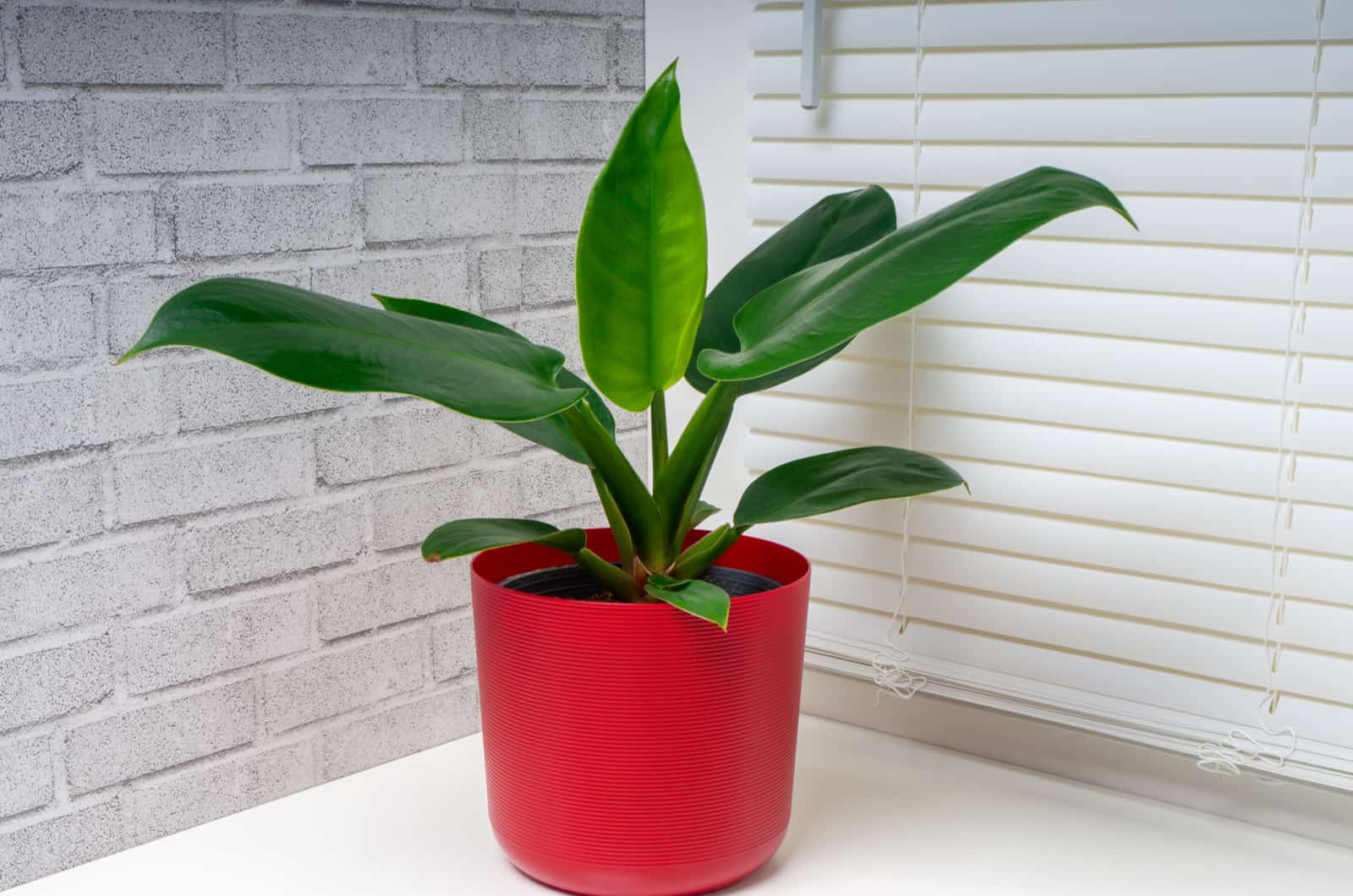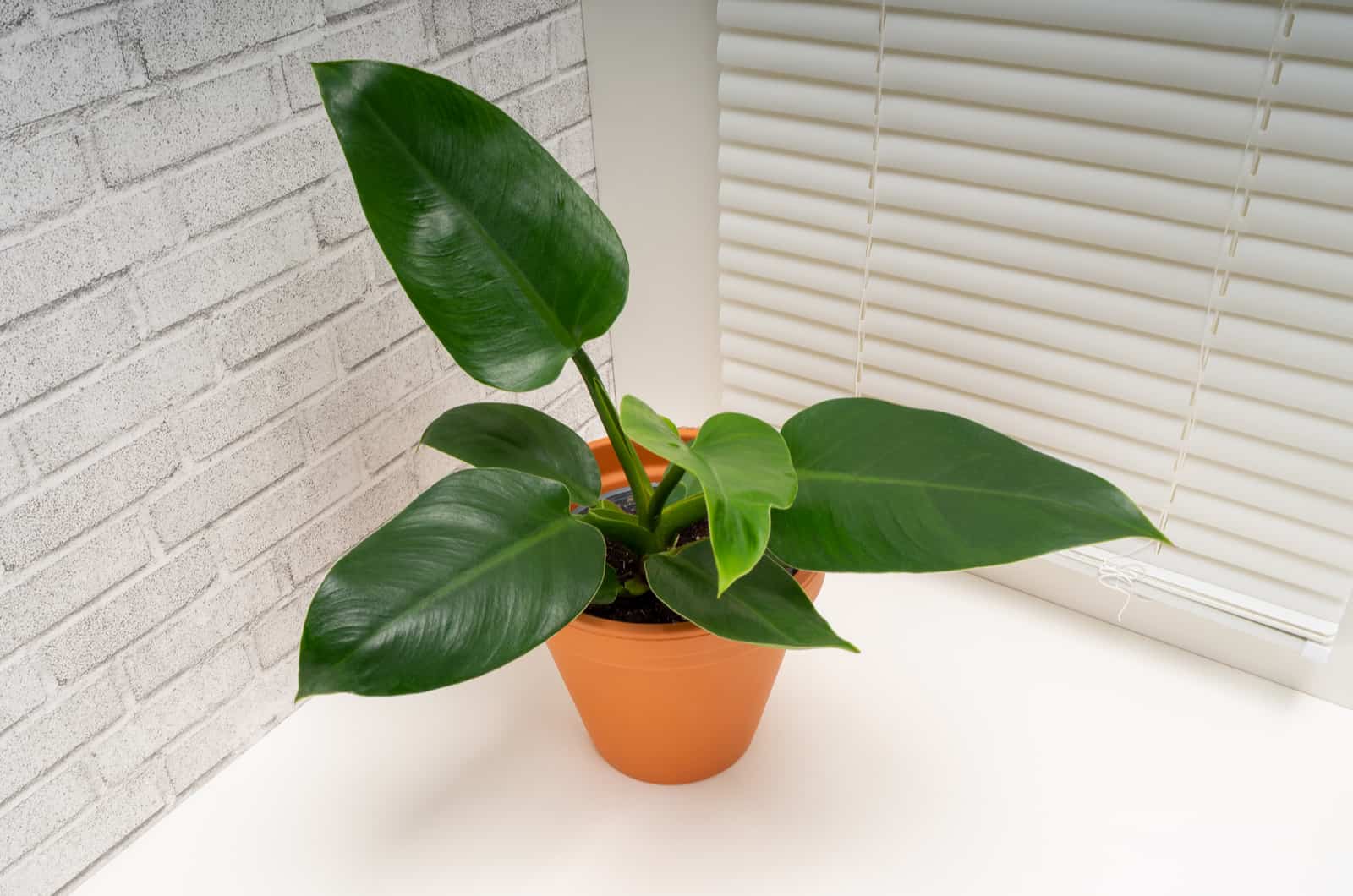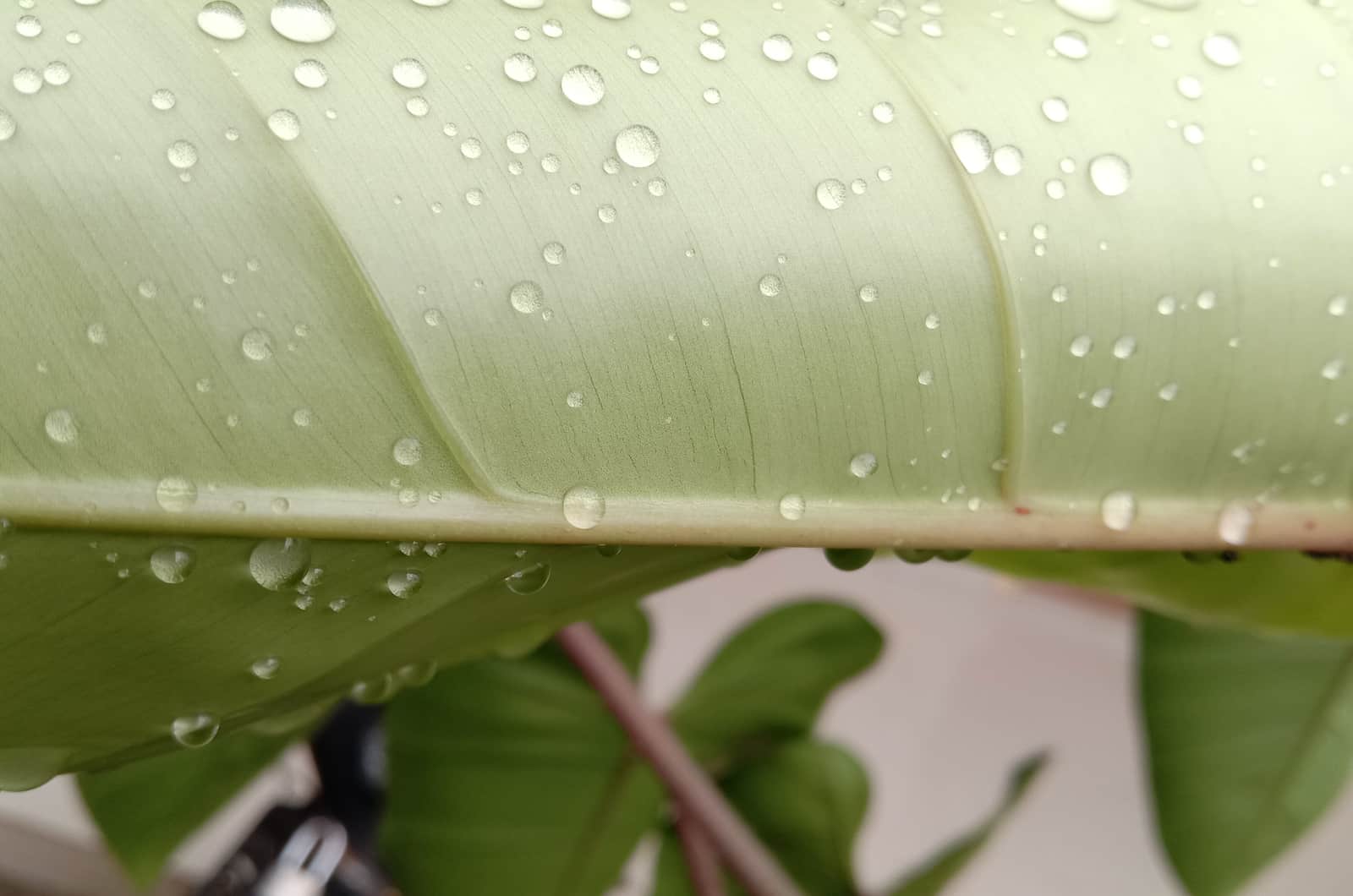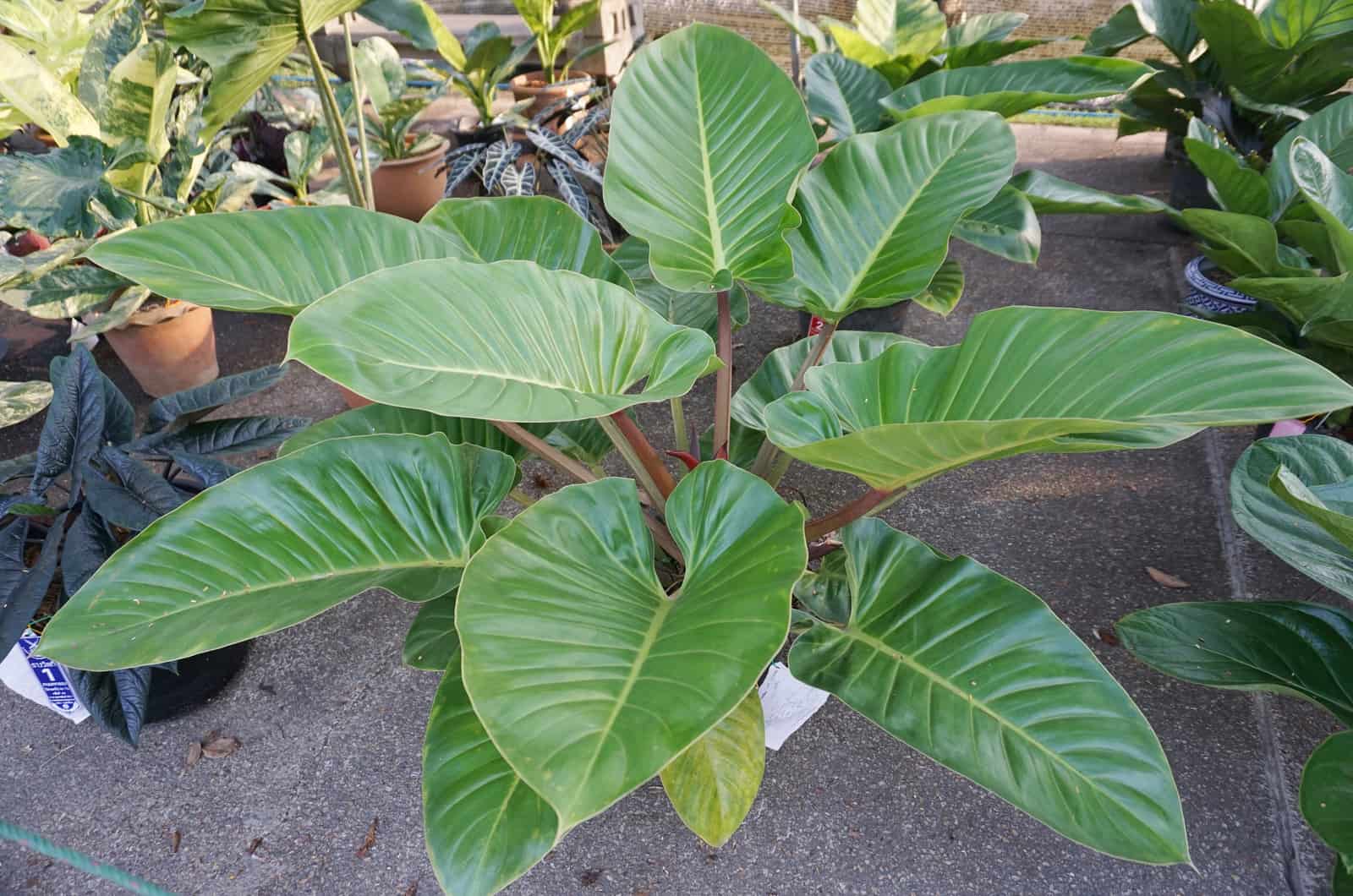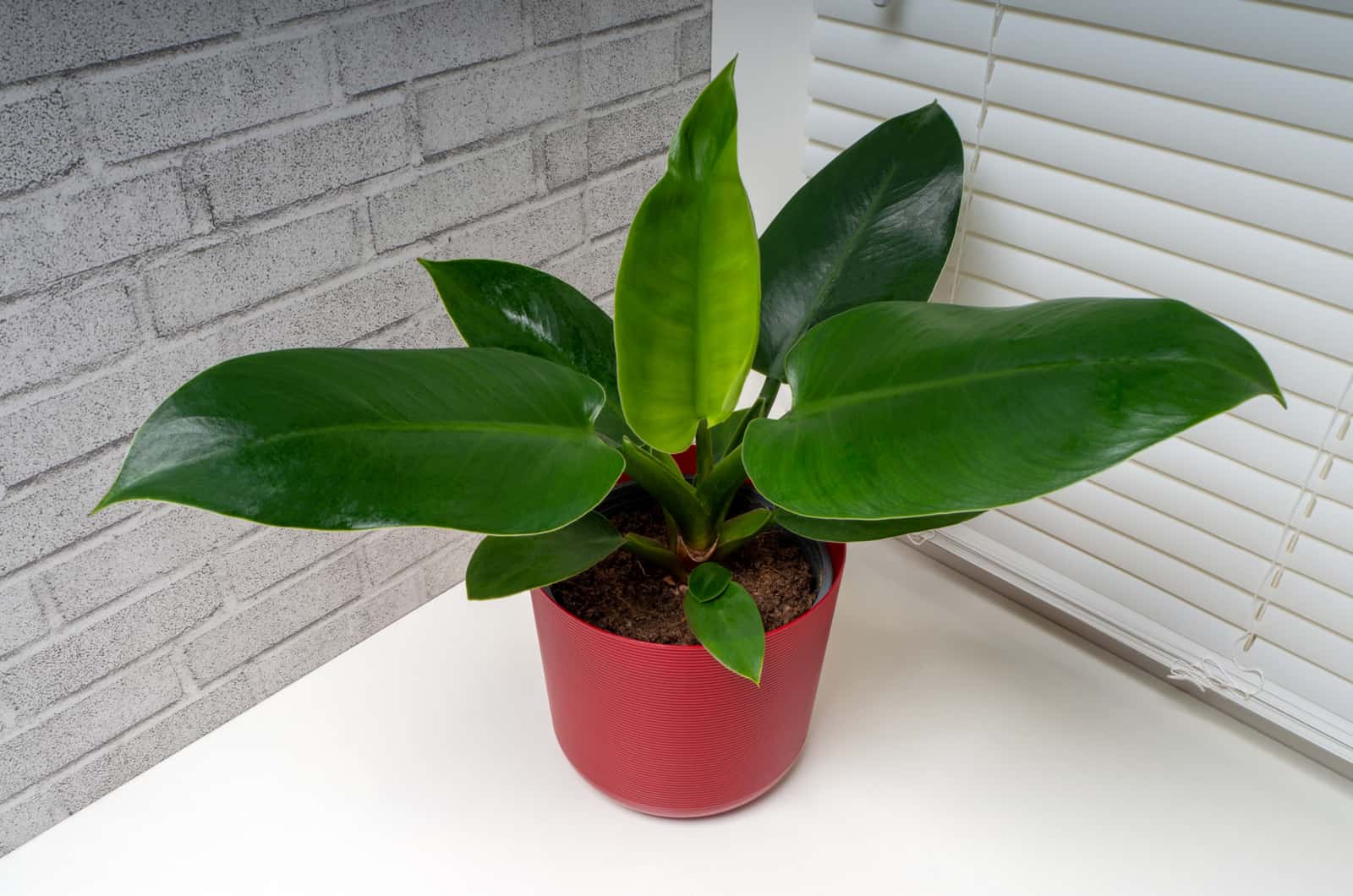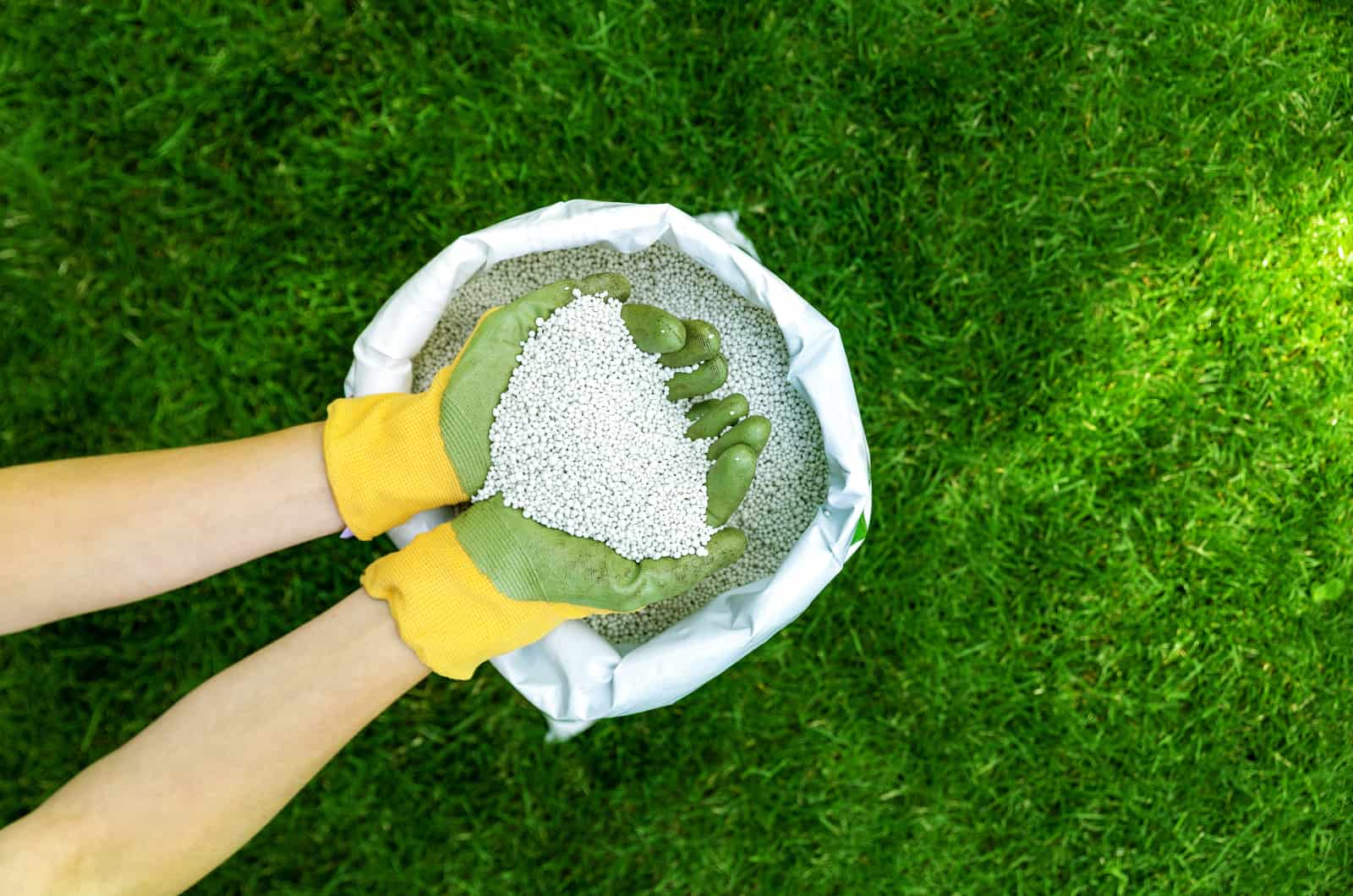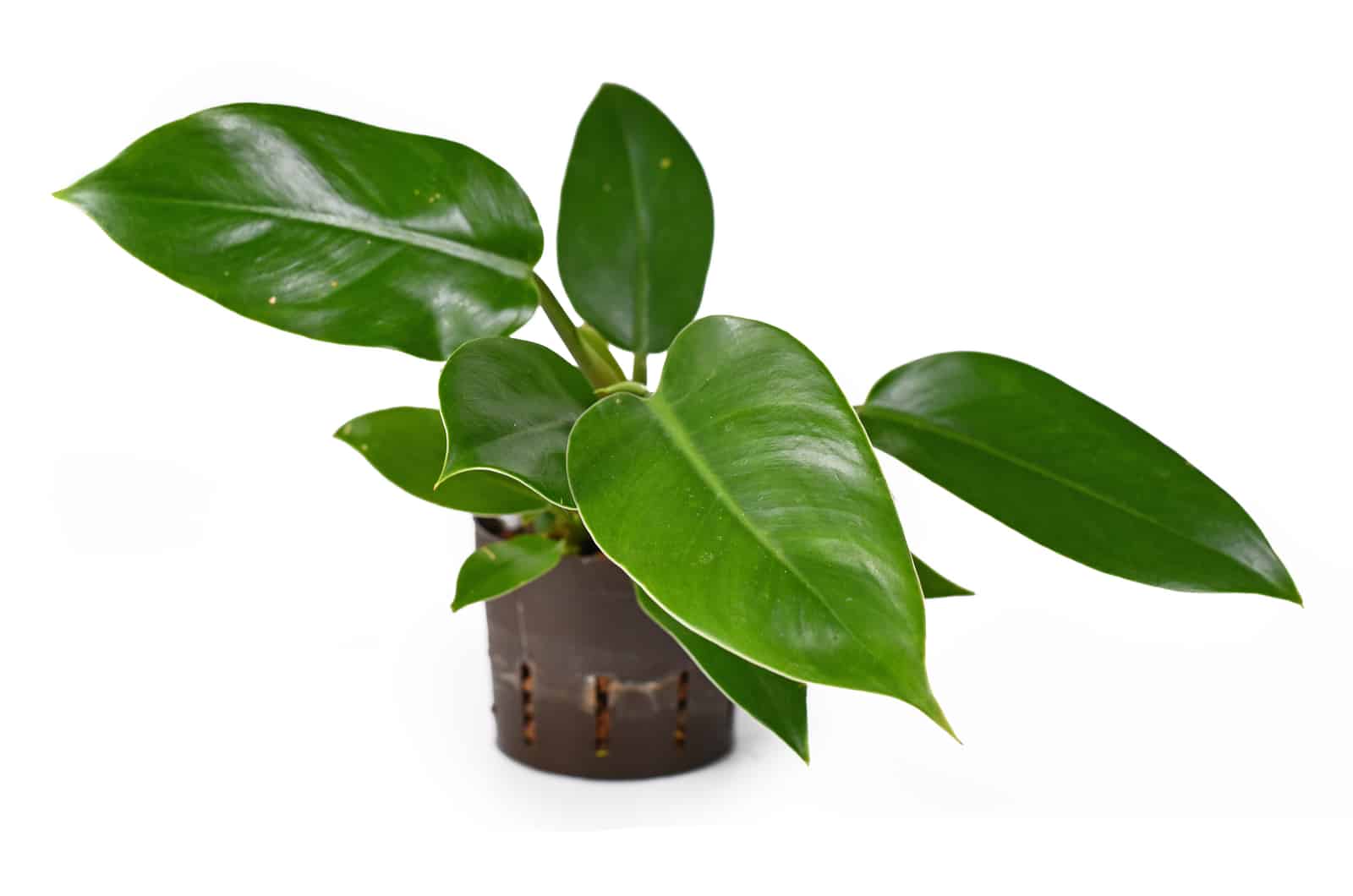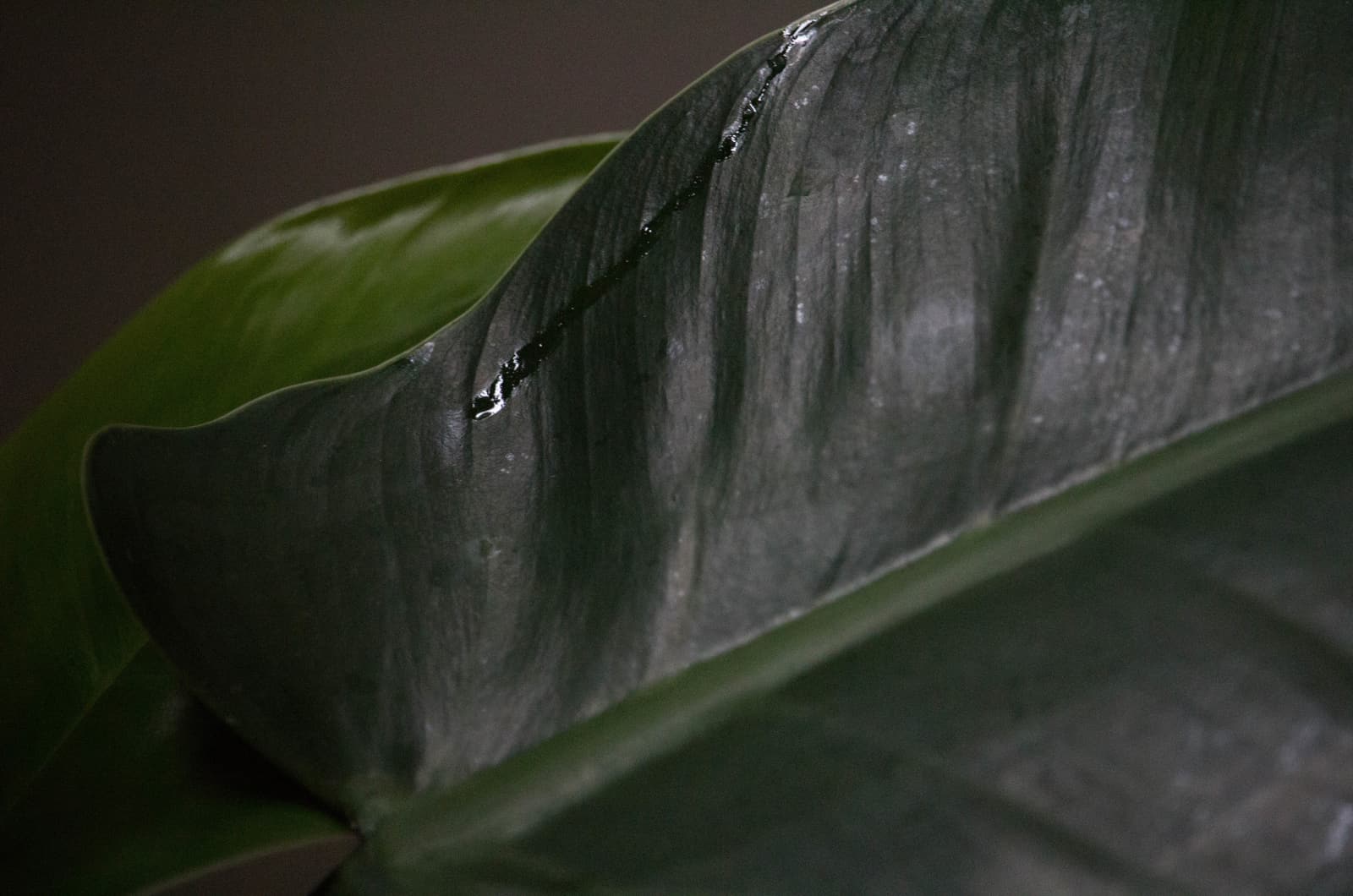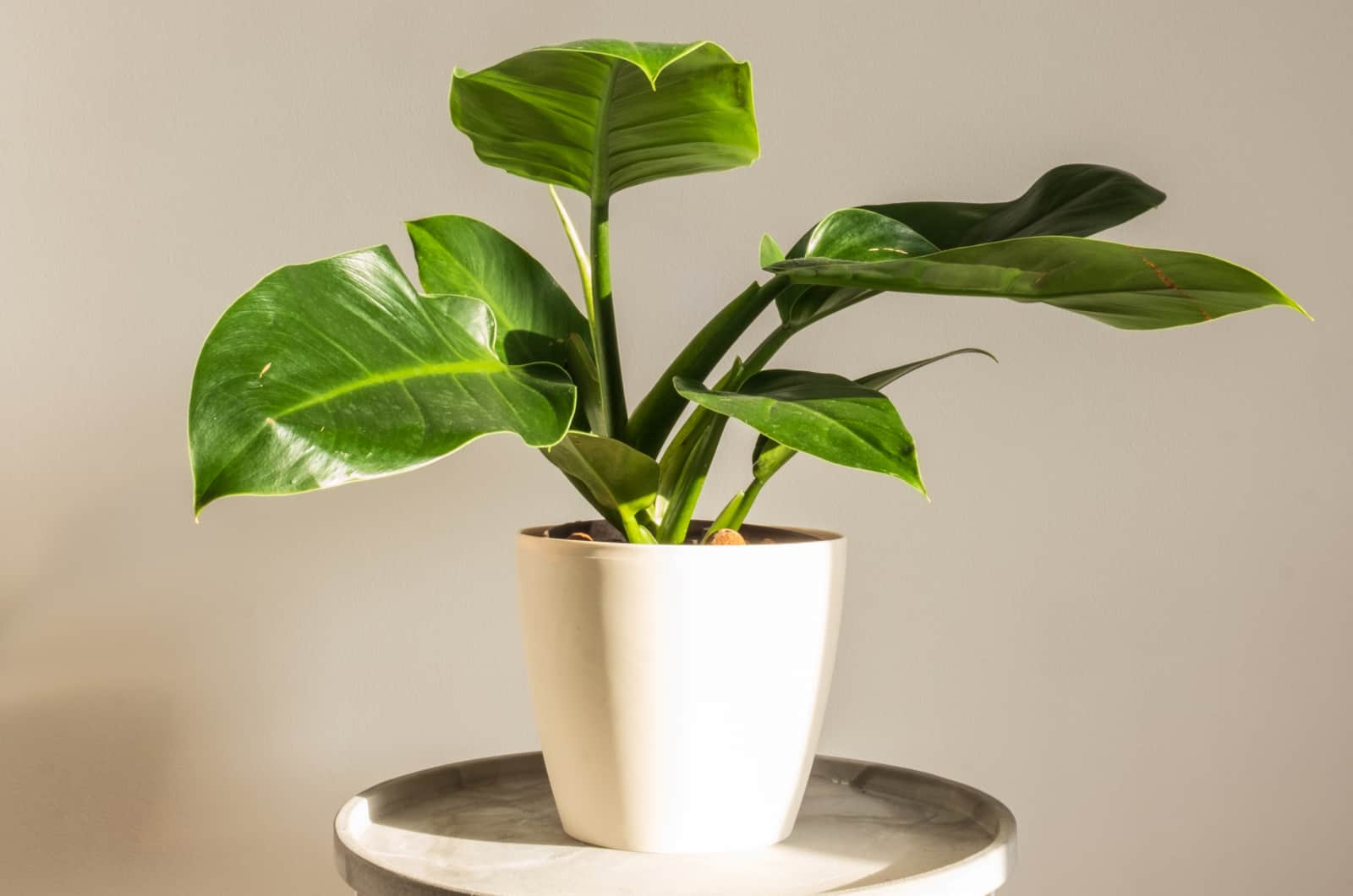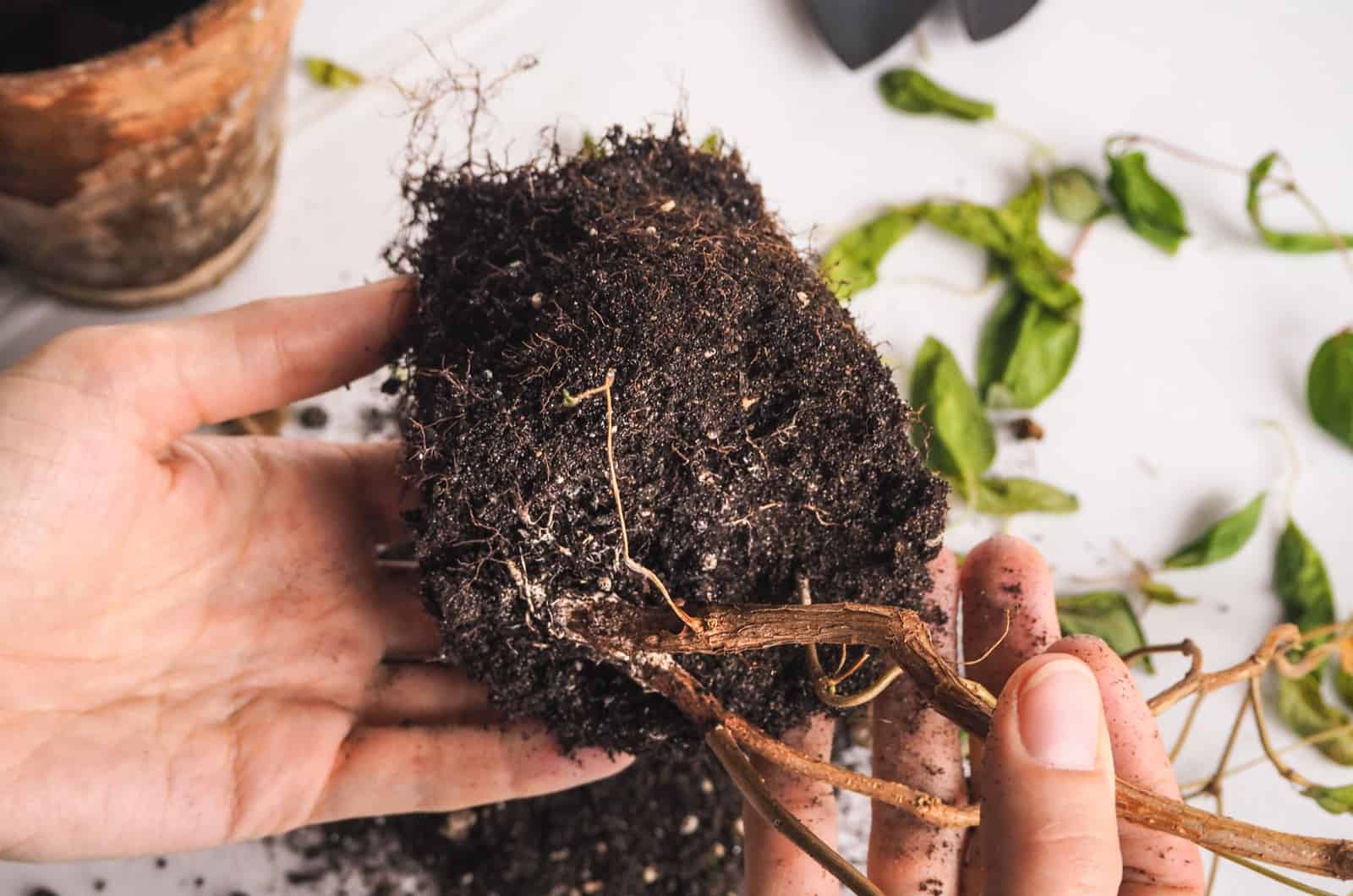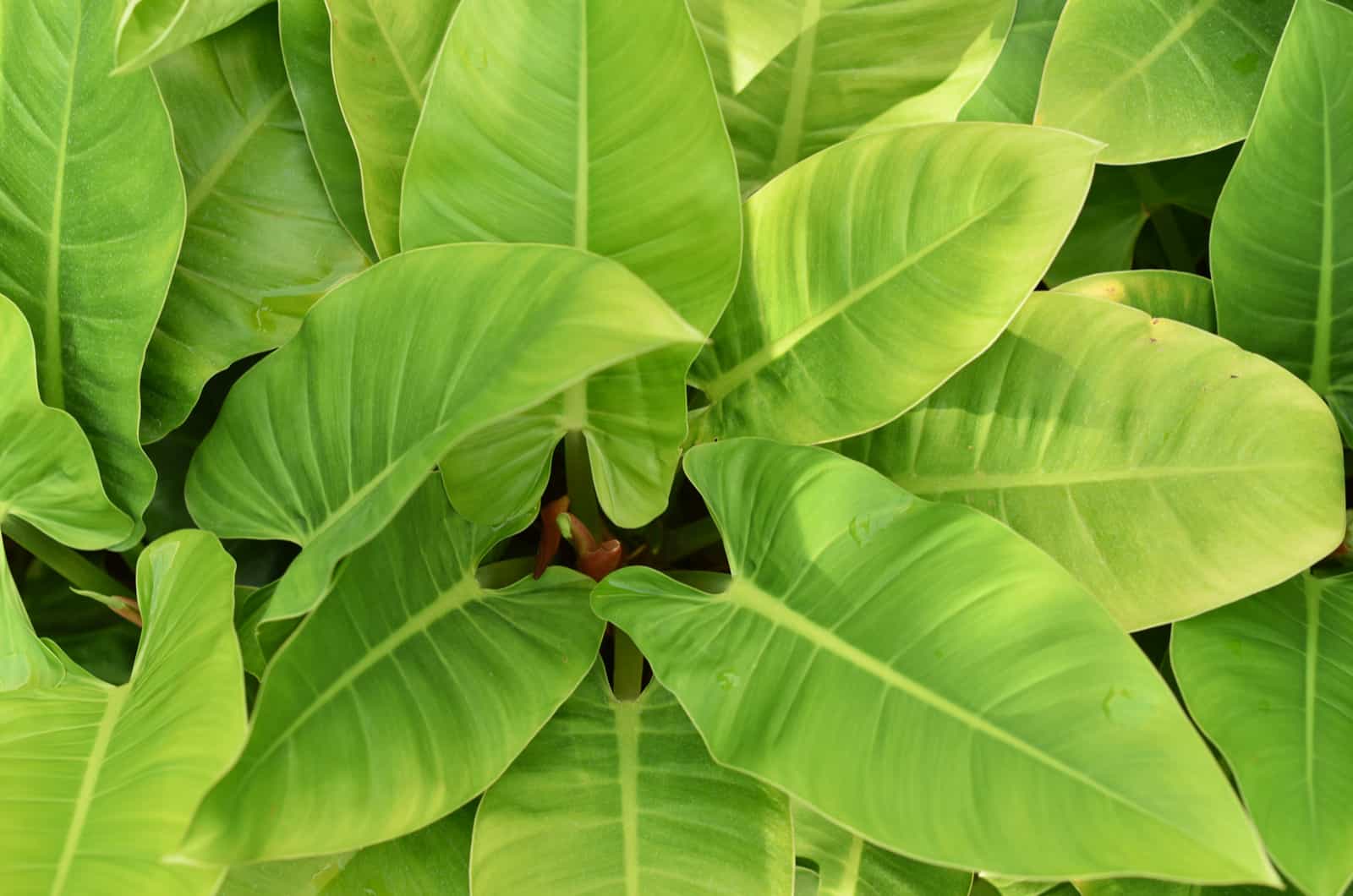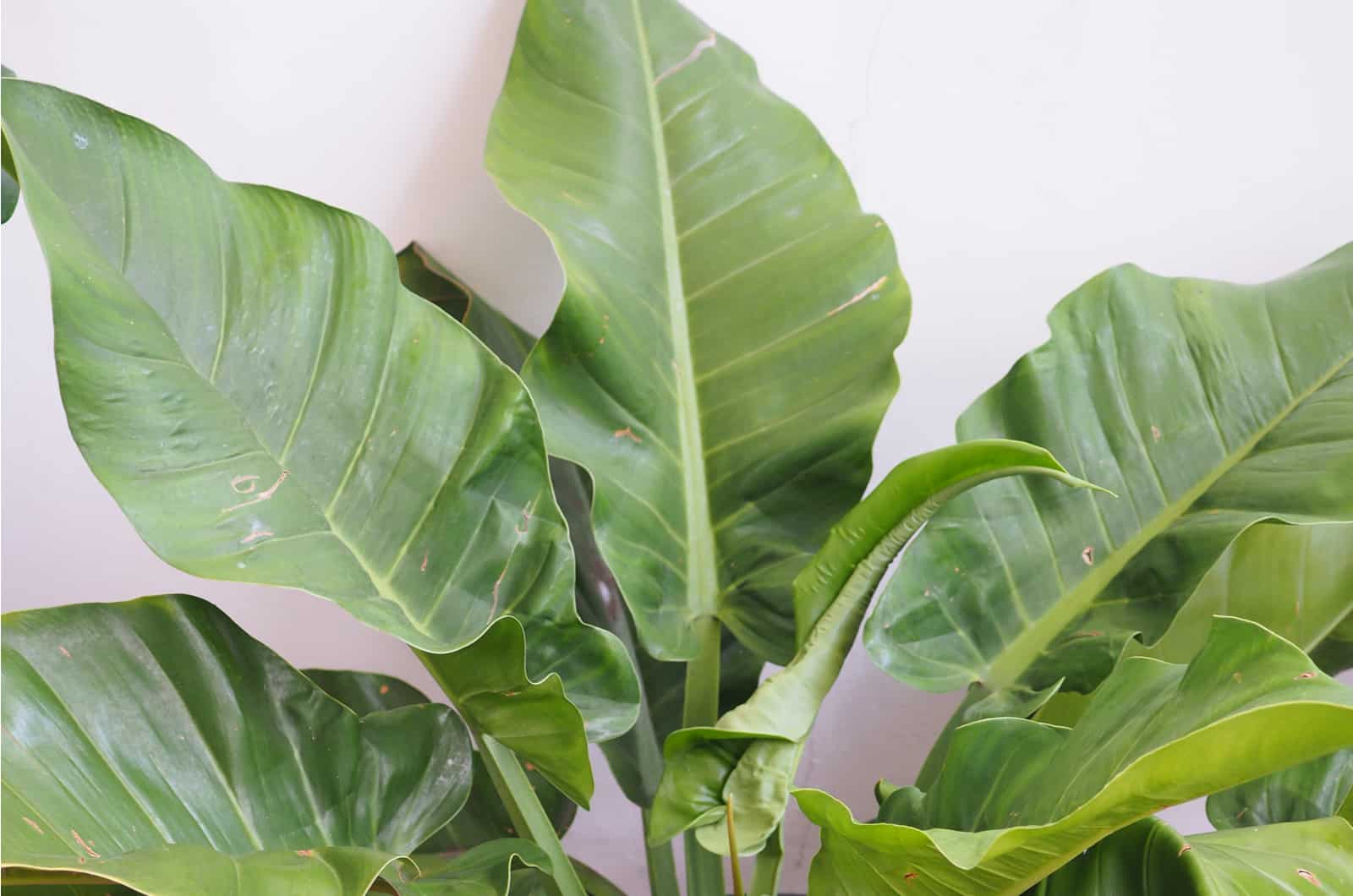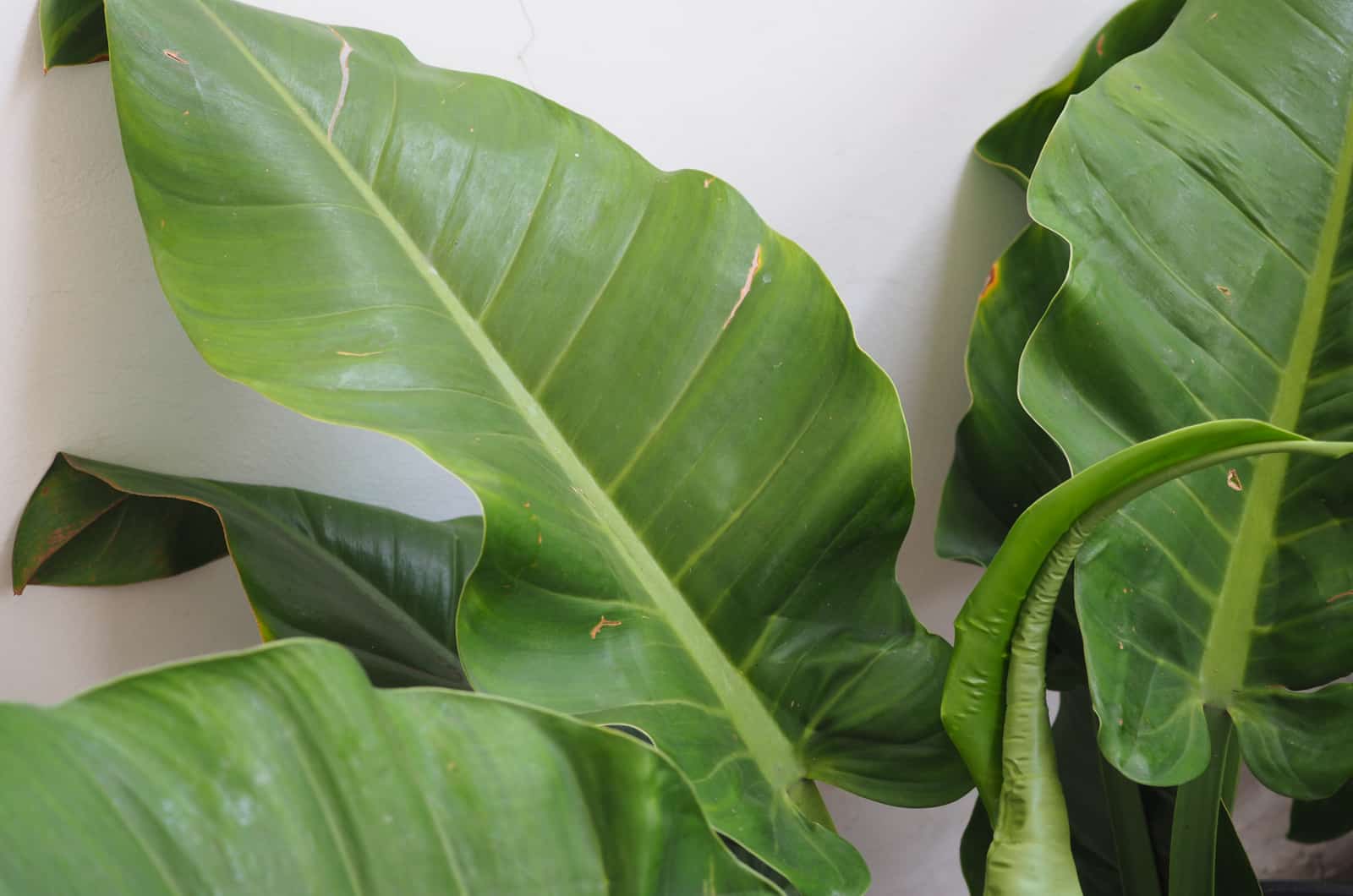No home is complete without a philodendron, and for that reason, we bring you another amazing variety of this glorious plant.
Due to its fantastic foliage, the Imperial Green philodendron has made it into our top 10 list of low-maintenance plants.
But, let’s not get ahead of ourselves, and let’s look into its general specifics first:
[table id=131 /]Now that you know some of the general information about this plant, you’ll know what you can expect from it. It’s neither too large, nor too small, and since its growth is not extremely fast, it won’t require much maintenance in terms of repotting.
However, there are other requirements that this houseplant needs, and we’ll bring you all of them in our extensive guide, so you won’t be left wondering how to care for your new plant.
Also, we’ll introduce you to some common issues that this plant experiences, and ways to deal with them.
Finally, we’ll bring you a detailed description of this plant and some other philodendrons, because who likes spending days all alone?
Shall we start?!
The Imperial Green Philodendron Care Guide
The Imperial Green philodendron is an aroid that doesn’t require much care. Simply put it where direct sunlight can’t reach it, give it some water, plant it in a well-draining medium, and you’re good to go.
Of course, these are the basic requirements, but what about fertilizer, pruning, cleaning, and repotting? How do you propagate this plant and give it as a perfect birthday present to your fellow plant collector?
There are many more aspects to growing a Philodendron plant than the basic “put it in a bright spot and keep the soil moist”, and in this care guide, we’ll bring you everything you have asked yourself about this plant, and more.
Light Requirements
Philodendrons are tropical plants, and they require filtered sunlight to stay healthy. Therefore, the best option is to grow this plant indoors, where you can control the light conditions and match them to your plant’s needs.
The Philodendron Imperial Green requires indirect light, so it’s best to keep it in rooms facing south, west, or east.
We prefer east-facing rooms and windows as the morning sun is not too harsh, so even if your philodendron comes into direct contact with the sun rays, it won’t get sunburned.
However, you should keep it away from the afternoon sunlight as this is too fierce and will burn your plant if given the chance.
For that reason, if you’re keeping it in a south- or west-facing room, you should move it further away from the window, where the direct sunlight can’t hurt it.
Also, if your flat is north-facing, don’t despair; we have a solution for that as well!
When your plants are exposed to low-light levels, their growth becomes stunted, and they become leggy and unattractive. That’s why we use grow lights in our north-facing rooms.
Full-spectrum LED lights are perfect for indoor plants.
Water Requirements
The correct amount of water is crucial for growing a healthy philodendron, and unfortunately, there isn’t a formula to tell us how much it needs.
However, we have some tricks up our sleeves that will help you to decide when and how much water your Imperial Green philodendron needs.
The general rule is to check the topsoil before watering philodendrons. If you don’t have a soil moisture sensor, you can simply put your finger into the soil and water the philodendron if it feels dry.
Also, you don’t need fixed watering schedules for this plant, and regular watering can do more harm than good.
Instead, check the topsoil every few days, and if it’s dry, it’s time to water the plant. However, if you’re unsure whether to water the philodendron ‘Imperial Green’ or not, it’s better not to, as the plant is less likely to recover from overwatering than underwatering.
Finally, when the watering time comes, irrigate the plant thoroughly, and don’t stop until you see water draining from the potholes.
Pro tip: water slowly so that the soil has time to soak in all the moisture.
Climate, Humidity, And Temperature
Philodendrons are tropical plants, and they prefer tropical climates and conditions. Therefore, they dread extreme temperatures, and low humidity might prove fatal, or rather, the foliage will start to wither and change color to an unpleasant yellow or even brown.
Humidity
The humidity is key to having a healthy philodendron Imperial Green plant. It has moderate humidity requirements, but it shouldn’t be kept in rooms where the average humidity level is lower than 40%.
Its optimal humidity levels are between 50 and 60%, but if your household’s humidity is somewhat low, there are some things you can do to raise it.
Below, you will find our favorite ways of raising the humidity indoors (don’t worry, they’re not too complicated!).
Humidifier
Increasing the humidity levels by using humidifiers is probably the easiest method, as you literally don’t have to do anything (except purchase the humidifier).
Pebble Trays
We call it the pebble tray method, but you can use any kind of small rocks, or gravel. This method is quite efficient, and it adds a rustic vibe to your space.
You simply have to find a deep enough tray that can fit some rocks and water in it. After you have filled it with these items, you can put your philodendron plant on it and let the tray do its job.
The evaporating water raises the humidity around your plant, and you can say goodbye to brown or yellow shriveling foliage.
Spraying
Spraying or misting is another easy-to-do method to increase the humidity. Spray the foliage with water and leave it to dry before you mist it again.
Don’t spray this plant every day, as too much water on the leaves may lead to fungal infections; spraying twice a week is just enough to stop your plant from getting dehydrated.
Grouping The Plants
It might seem like an ineffective method, but grouping plants together is an excellent way of increasing the humidity levels.
The plants release moisture by respiration, which creates a favorable environment in which your plants can prosper.
However, ensure that you only group plants with similar humidity requirements, a monstera could be a partner in crime to your philodendron in this situation.
Moving Plants To More Humid Rooms
Bathrooms and kitchens are probably the most humid rooms of our homes, and it’s actually a great idea to move the Imperial Green philodendron here as then there’s no need to raise the humidity.
You might not be inclined to hide your philodendron in the bathroom, but a kitchen could be a lovely new home for your plant.
Temperature
The Philodendron Imperial Green loves warm temperatures, and anything between 60 and 85 °F (15-30 °C) is ideal.
This plant cannot withstand extreme temperatures, especially the cold. Temperatures below 60 Fahrenheit (15 °C) will stunt the plant’s growth, and anything lower than 50 °F (10 °C) can cause serious damage, from which the plant is unlikely to recover.
You might have noticed by now that this plant is somewhat delicate. It wants the room temperature to be perfect, or it will stop growing.
That’s why it is not surprising that it doesn’t do well with sudden temperature swings and drafts. Cold drafts are particularly troublesome as they lower both the humidity levels and temperature.
Soil And Fertilizer
An important part of the plant care of this philodendron is using the correct soil and fertilizer.
The Philodendron Imperial Green loves acidic soils with a pH level between 5.0 and 6.0. Fertile and well-draining soils with good aeration are all this philodendron needs.
You can buy a ready-made aroid potting mix or make your own. If you prefer homemade mixes, here are some simple recipes you can use.
Make a mixture of perlite and potting soil with a 1:1 ratio. Perlite will ensure aeration and drainage, whereas the potting soil will provide enough nutrients and moisture retention to keep your plant healthy.
You can also mix 30% all-purpose potting mix, 30% peat moss, 30% orchid bark, and 10% perlite, and add a bit of horticultural charcoal to clean the impurities.
Fertilizer
A Foliage plant such as the Imperial Green Philodendron requires regular fertilization during its growing season.
Often, we use balanced, general-purpose fertilizers, such as triple 20, once a month in spring and summer. However, diluting such fertilizers to half-strength is crucial to avoid over-fertilization and unappealing foliage.
But, if you’re unwilling to fertilize your plants this often, you can always add 10% of worm castings or compost to the planting medium, which will provide the necessary nutrients for the next year or two.
But whatever you do, don’t continue this regime in fall and winter when the plant enters dormancy. The plant cannot use all the food you give it, and the fertilizer will only burn it and cause leaf damage.
You don’t have to fertilize this plant during dormancy at all, but you can add some extra food every two months or so.
Time Of Repotting
Repotting is also a part of the philodendron Imperial Green care that shouldn’t be ignored.
Even though this plant doesn’t grow with the speed of light, it still needs to be repotted once every two years, or when you see that the roots are showing through the drainage holes.
This philodendron loves to be rootbound, but you should repot it more often if you want to speed up its growth.
The best time to repot is when the plant is actively growing, which allows it to adjust to the new container before winter.
Also, increase the pot size only by an inch or two, as too large containers encourage too much water retention, which can lead to overwatering.
Here’s a video that can help you repot and make a soil mix for your philodendron Imperial Green.
Propagation Methods
Propagation is an excellent way of giving your friends a unique gift. Everyone has experienced failed propagation, and we’re here to ensure that it never happens again (or at least that it doesn’t happen all the time).
Philodendrons can be propagated through stem cuttings and air layering, and below you will find detailed guides that will help you to create a perfect present for your loved ones.
Propagation Through Stem Cuttings
Propagation through stem cuttings is probably the easiest and safest method of propagation. You can propagate this philodendron in soil or water, and both ways have their perks.
Propagation in water is faster, safer, and has a higher success rate, but the soil propagation allows the plant to adjust to the planting substrate at the very beginning of its life, making it less susceptible to transplant shock.
But enough speculation! Let’s examine these methods in more detail!
Soil
We prefer propagating in the soil, as there is less risk that the young plant will go through shock caused by repotting.
There is a formula that has always worked for us, and we have decided to share it with you.
Step 1. Choose a healthy stem 3-6 inches (7.5-15 cm) long with some leaves on it. There’s a greater possibility of success if the stem has nodes and/or aerial roots.
Step 2. Cut the stem below the leaf node with a pair of sterilized shears, you don’t want to transfer bacteria that have the potential to kill your plants.
Step 3. Remove the bottom leaves, leaving only the top ones.
Step 4. Put the stem in a rooting hormone and then plant it in a nursery tray filled with moist, well-draining soil.
Step 5. Put the tray in a warm spot with plenty of bright light. You can put a humidity dome or plastic sheet over the young plant to increase the humidity.
Step 6. In a month the plant should develop its root system, which is when you should repot it. You can’t see the roots, but you can slightly tug the plant, and if it doesn’t come out, it means that the roots have developed and it is ready to be moved.
Water
Propagation in water is much simpler than propagating in soil.
Again, you should take a healthy cutting the same way as you would for soil propagation. But, instead of planting it in soil, you will put this cutting in a glass container filled with water.
You should place the cutting in a warm and bright spot and change the water every second day. Also, don’t forget to mist the foliage as it needs moisture to thrive, but don’t overdo it; you don’t want a new plant with powdery mildew on its leaves.
Finally, after 2-3 weeks, you should see new roots developing, meaning you should repot the new plant at once.
Fill the small pot with fresh soil with good drainage and aeration, place the plant where it will get plenty of indirect sunlight, and enjoy your new philodendron.
Just don’t forget to mist it from time to time, or meet its humidity requirements some other way.
Propagation By Air Layering
Propagation by air layering has its benefits, and one of them is that you don’t have to cut the plant in order to propagate it.
This method might be a bit more complicated, but it is much safer as you don’t have anything to lose.
Step 1. You need to find a stem with at least one node for air layering. Place peat moss around it and wrap it with a plastic wrap.
However, you shouldn’t wrap the moss too tight as this can lead to fungal diseases.
Step 2. Next, make some holes in the wrap so you can mist the moss to keep the soil moist and encourage root development.
Step 3. After the roots have developed, cut the stem and plant it in a pot filled with fresh aroid soil mix.
This process is unpredictable, and you can never tell whether it will take a week or several months. But, since it’s the least invasive method, the long wait is not an issue.
Pruning And Cleaning
Pruning and cleaning are essential steps in the Imperial Green philodendron care routine. Whenever you see damaged leaves, you should cut them, whatever the cause.
You can also prune this philodendron as an incentive for growth, or if you think it’s too large.
Cleaning your philodendron is something you shouldn’t skip. Use a damp cloth to wipe the dust and give those green leaves the shine they deserve.
But, don’t forget to dry the leaves afterwards, as wet foliage equals fungal infections. However, if you want to make your job easier, you can wipe the foliage as a form of raising the humidity.
Then, you can leave the leaves to dry on their own, without worrying about what might happen. Just don’t increase the humidity any other way, and you’re set.
Common Problems
Philodendrons are plants susceptible to fungal diseases, not because they are incredibly delicate but because when we hear “tropical,” we assume they need constant watering.
But that’s not the case.
In this section, you can read about the most common diseases that attack this philodendron and about some other issues it has to deal with, mainly due to overwatering.
Diseases
Root rot, leaf spot, and powdery mildew are the most common fungal diseases that attack this plant, and they’re all caused by inadequate moisturization.
But that means that all these diseases can be prevented, if not cured. Stay with us and learn more about these issues!
Root Rot
Root rot is caused by overwatering, and you can prevent it by watering the plant only when the topsoil is dry, planting the philodendron in a pot with drainage holes, and using a well-draining medium.
This disease is characterized by stunted growth and yellow leaves that start to wilt.
There isn’t a miracle cure that can make root rot go away, but there are still some things you can do.
As soon as you notice a change in the foliage and stunted growth, check the plant’s roots, and if they are soft, soggy, and brown, it means your plant is infected with root rot.
The only thing you can do is cut the rotting roots and leaves, replant the philodendron into a new pot and soil, and adjust the watering to its actual needs.
Leaf Spot
Leaf spot is another common disease, but it affects plants’ leaves, not roots. However, it is equally vicious, and if you don’t treat it, you may be left without a plant.
Leaf spot is caused by fungi and bacteria that love wet places where they can multiply. Therefore, if you leave the leaves wet for too long, the spores from the air will stick to them and start spreading.
You can recognize this disease by yellow lesions on the leaves, or brown or black spots that cause cell death. This disease reduces the surface of the foliage, and the plants cannot produce enough food by photosynthesis, which results in stunted growth.
However, there is a cure! You should isolate the affected plant, remove and destroy all diseased foliage, and spray it with some fungicide.
Powdery Mildew
Powdery mildew is caused by excess humidity, which allows the fungi spores to spread and create that white powdery layer we all know.
You can prevent it by moving your plant into a warmer place with less humidity. However, if your plant is infected, you can treat it by pruning the infected leaves and spraying it with fungicide.
Pests
The most common pests that attack houseplants, philodendrons included, are mealybugs, spider mites, and aphids.
These nuisances are everyone’s worst nightmare, but they don’t have to be.
You can easily get rid of them by spraying them with pesticides like horticultural oil or neem oil.
However, if you prefer more natural treatments, you can run the plant under a strong water flow or remove the pests with a cotton bud dipped in alcohol.
But be careful with alcohol as it might cause damage to your philodendron.
More About The Philodendron Imperial Green
There are more things to the Imperial Green Philodendron than just its care guide and common problems.
In this section, we bring you its background and appearance, and if you like this variety, we have some others that may lighten up your house or flat as well.
History And Background
The Philodendron Imperial Green is a cultivar of Philodendron erubescens, and it belongs to the Araceae family.
The Imperial Green Philodendron as we know it is thought to have been discovered in 1977 in Florida. However, there’s a rumor that the dark green foliage of this species was seen much earlier, perhaps even in 1854, when Philodendron erubescens was discovered.
Another interesting fact about this plant is that it isn’t a vine, but when it was discovered it grew on trees, not from the soil.
There isn’t a special reason for this, only that in time, the Imperial Green philodendron somehow forgot that he wasn’t a vine and started climbing trees.
Appearance
As you may have already concluded from the previous section, this philodendron variety is not a vine, but a self-heading plant, meaning it doesn’t spread, nor climb up a stake.
It is cultivated for its oval-shaped, glossy green leaves that add a spark to every room. There aren’t many leaves on a single plant, but they can still contribute to your design.
This is one of the rare philodendrons, with gorgeous flowers whose red and white colors capture your gaze, and don’t let go.
Other Common Philodendrons
If you like the Imperial Green philodendron, wait until you see it around its friends. All plants need company, and here are some fabulous philodendron varieties that will make every parting difficult.
You can also combine it with a Philodendron Camposportoanum as their care guides are quite similar, but their growth habits differ so they can bring more diversity to your home decor.
Philodendron Imperial Red
The Imperial Red is a variety that will go perfectly with your home’s white decor. Its leathery leaves change color as they grow older, and young plants are a vibrant red, and with time, they change to burgundy and eventually dark green.
Their elongated shape and glossy surface make this philodendron quite irresistible.
Philodendron Prince Of Orange
The name says everything you need to know about this variety. The lush, orange foliage is simply essential to every philodendron collector.
The thick, elongated leaves change their color to green as they grow, but there are always new leaves sprouting and adorning your living room.
Frequently Asked Questions
Now you know how attractive the Imperial Green philodendron is, but there are still things left unsaid.
This section brings you answers to the most common questions about this philodendron variety.
Is the philodendron Imperial Green rare?
No, the philodendron Imperial Green is not rare. Its native habitat extends through both Americas, and you can find it in many households worldwide.
If you want to become the owner of such an amazing plant, you don’t have to worry about the price; online prices start from $13. Of course, larger and more established plants are more expensive, but now that you know what this plant needs, you can buy a young plant without any fear.
What is the best time of year to plant an Imperial Green philodendron?
The best time to plant, propagate, or repot a philodendron Imperial Green is through early spring and early summer because this is the growing season of this plant.
If you plant the philodendron in winter during dormancy it probably won’t survive, as it won’t be able to adjust to the new potting medium.
It needs food and water to acclimate to new conditions, and in fall and winter, it doesn’t use much food or water, so it cannot grow.
What are the benefits of a Philodendron Imperial Green?
The main benefit of this philodendron is that it has air-purifying abilities, and if you have enough of them, you can enjoy the fresh air all the time, not just when you go hiking out of town.
This plant will filter toxic gasses, such as benzene and formaldehyde.
You’ll have more energy, and it will raise your spirits.
Now tell me, who doesn’t want that?
To Wrap Up
This has been quite an enlightening article for you and me both. We have remembered why we got into plants and gardening in the first place.
The Imperial Green philodendron is a perfect plant for beginners due to its easy maintenance needs.
There isn’t much it requires; bright light and moist and well-draining soil. However, we felt that this information might not be enough for you, so we brought you an extensive guide that covered all bases.
Also, no care guide is complete if you don’t admit that there can be issues with your plant, whether you like it or not. We realize that pests and diseases can lead to many sleepless nights, so we wanted to lift that burden off your shoulders.
You now know how to treat healthy and unhealthy philodendrons alike; you know their origin and benefits, and all that’s left is for us to wish you good luck with your new plant!
Until next time!

